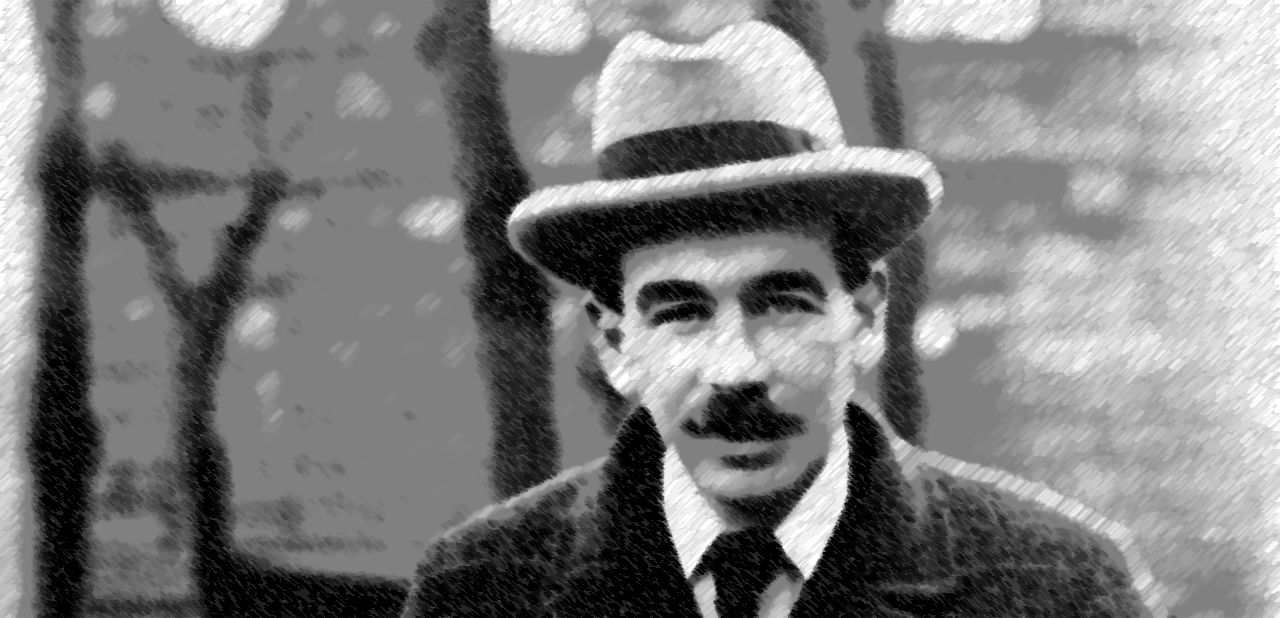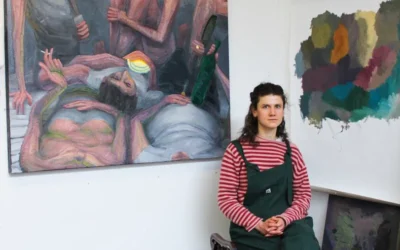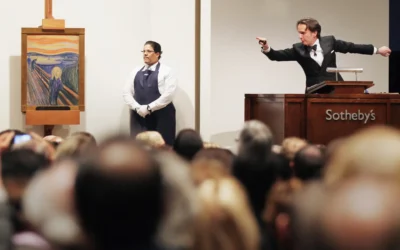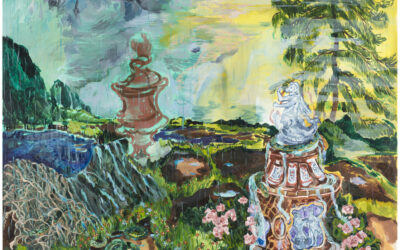Art Collectors
Anton and Annick Herbert
The Herbert Collection of Anton and Annick Herbert is considered to be one of the most important collections of Western avant-garde art in the world. It highlights work between the pivotal historical years of 1968 and 1989 which saw counter-revolutionary youth movements spread across Europe, and the fall of the Berlin Wall. Artists represented by the collection played key roles in the evolution of this period, and were leaders in Minimalism, Arte Povera and conceptual art. They included Carl Andre, Giovanni Anselmo, Robert Barry, Hanne Darboven, Douglas Huebler, Joseph Kosuth, Sol LeWitt, Richard Long, Mario Merz, Bruce Nauman, Mike Kelley, Franz West, Lawrence Wiener and Martin Kippenberger. Acquisitions made represent long-standing friendships between the Herberts and the artists they collected. They shared a common sensibility, constantly questioning traditional notions of artwork, artistry and the art world. In 2011, the couple sold a relatively small number of artworks and raised over £4,880,450 in order to build The Herbert Art Centre in Ghent, which opened to the public in 2013. It is accompanied by an archive of diverse materials that act as a resource for the study of Western post-war art. The Herbert Foundation was established with the opening of the new gallery and supports emerging contemporary artists.
Valeria and Gregorio Napoleone
The Napoleone Collection belongs to Italian-born couple Valeria and Gregorio Napoleone, and consists of approximately 200 works of contemporary art, made exclusively by female artists. The collection began when the couple were living in New York during the 1990s. At this time, Valeria started purchasing the work of strong, upcoming, female artists, including the work of Ghana Amer, Tauba Auerback, Shirin Neshat, Rivane Neuenschwander, Pae White, and Lisa Yuskavage. She continues to buy work from artists with whom she has built up a strong relationship, and will not spend more than €30,000 on a piece to prevent it from becoming an investment. The collection is now hung in their London home where it is rearranged on a monthly basis, each piece in the same place for up to two years. Works are often loaned to support the young artists she buys from, and she spends time working with institutions to correct the gender imbalance in so many collections.
Dominique and Jean De Menil
Between the 1940s and 1990s, Dominique and Jean de Menil accumulated one of the finest personal collections of the modern era. It includes more than 17,000 items, and is notable for its eclectic mixture of modern art alongside artefacts from ancient and indigenous cultures. They first met at a ball at Versailles in 1930 and married soon after in 1931. At this time, their relationship with Dominican priest Father Marie-Alan Couturier caused them to become interested in the crossover between modern art and spirituality. With the outbreak of WW2, they moved to Houston in 1941 into a home designed by architect, and personal friend, Paul Johnson. The house stored the work, and became a place frequented by many of the artists they collected. Their first acquisition was a Cézanne watercolour, ‘Montagne’ (1895), that John brought back from a business trip in 1945. The collection rapidly expanded to include Cubism, Surrealism and other Modern European painting and sculpture movements, as well as later American post-war art such as Abstract Expressionism, Pop Art, and Minimalism. Represented artists included Victor Brauner, Max Ernst, Jasper Johns, Yves Klein, Rene Magritte, Robert Rauschenberg, Dorothea Tanning, and Andy Warhol. The collection is now housed in a purpose-built gallery designed by Italian architect Renzo Piano that was opened in 1987. Admission and all public programmes are free, in line with the Menil virtue of access to art for all of humanity. Scholarship being at the heart of the Menil enterprise, the gallery features a conservation studio and research library which symbolically flank the exhibition spaces. *
Ingvild Goetz
In 2012, Ingvild Goetz’s private art collection was the largest in Germany. It is comprised of approximately 4,600 contemporary artworks, concentrating on Arte Povera, late American painting of the 1980s, Young British Artists of the 1990s, and media art. In 1972, she opened her first gallery in Zurich called ‘art in progress’ which moved to Munich in 1973. Inheriting part of the family fortune in 1984, she decided to give up her job as a gallerist to devote her time to collecting contemporary art. In 1993, the collection moved to a purpose-built museum designed by Swiss architects Herzog and de Meuron in Munich’s Oberföring. The collection places a special value on art-historical research, and has a library of accompanying material including monographs on all artists represented in the collection. Instead of acquiring work by new artists, the collection aims to expand and consolidate knowledge about artists represented. On 1st January 2014, Ingvild donated 375 works, as well as the exhibition space in Oberföring, to the State of Bavaria.
Pamela and Richard Kramlich
Pam and Dick Kramlich are a San-Francisco-based couple who own one of the largest private collections of video and new media art in the world, including approximately 300 works by more than 60 international artists. Having previously collected drawings and prints, they turned to collecting electronic art after a San Francisco Museum of Modern Art trip to Documenta in 1987. Their collection began in 1992 with the acquisition of a Fischli & Weiss videotape, ‘The Way Things Go’. At this time, the collection of primarily time-based work was unprecedented. It grew to include work by late 1980s artists such as Vito Acconci, Dara Birnbaum, Marcel Broodthaers, Dan Graham and Bruce Nauman, as well as leading contemporary artists including Matthew Barney, Stan Douglas, Steve McQueen, Mariko Mori, Keith Tyson and Jeff Wall. Their home in the Napa Valley was specially designed by Swiss architects Herzog and de Meuron, alongside curator Terry Riley, to house and display their unique collection. It demonstrated that video art can comfortably occupy a domestic setting. In 1997, they established the New Art Trust with the goal of advancing the media arts through the support of research and scholarship in the field.
Ivan Moskowitz and Rena Conti
Rena Conti is a health economist at the University of Chicago, and Ivan Moskowitz is an anatomic pathologist affiliated with the Children’s Hospital in Boston. Together, they began acquiring art by young, emerging artists during the 1990s after they met as college students in Madison. They are among a group of Boston-area collectors interested in high-tech art that for decades was considered uncollectible due to its relatively high cost, technical hassles, and demands on the senses. The collection fills the second-story of their Brookline house. They hold the belief that an interest in contemporary art ought to be an interest in all mediums, and that collecting electronic work questions the notion of art as something you put above your sofa.
Freddy and Murial Salem
The Cranford Collection is a private art collection of over 700 works, centred on European art made since the early 1980s, including many works by Young British Artists from the 1990s. It was established in 1999 by Freddy Salem and his wife Murial under the support and collaboration of curator Andrew Renton; succeeded by Anne Pontégnie in 2011. A key aim of the collection is to reflect London’s dynamic scene and to support emerging artists. The collection started modestly when Murial began buying work to decorate her home when she moved to England from Beirut in 1975. Her first acquisition was an installation by Martin Boyce. It has grown to include work by Paul Hoble, Sigmar Polke, Albert Oehlen, and Spartacus Chetwyn among others. The collection is on display in the couple’s Regent’s Park home in London and can be viewed by appointment only. Since 2005, it has been mounted in a series of installations that are refreshed every 18 months, demonstrating that even the most interesting contemporary artwork can be lived with. In 2013, the collection was presented in a public context, at the Foundation Banco Santander near Madrid, in a large-scale exhibition “Out of the House”. In 2014, the collection’s office moved to its own building in Albany Street, offering the opportunity to host workshops and residencies.
Herbert and Dorothy Vogel
Working as civil servants in New York City, Herbert and Dorothy Vogel amassed over 4782 artworks that together are said to be one of the most important post-1960s art collections in the United States. They had no children and lived frugally. Dorothy’s income covered their living expenses, while Hebert’s, peaking at $23,000 annually, was used for art. One of their earliest acquisitions was a Guiseppe Napoli that Herb bought before marrying Dorothy. They didn’t buy for investment, but chose pieces they personally liked, and which could be carried home on the subway or in a taxi. They bought directly from artists, often paying in instalments. Once, they famously received a collage from environmental artist Christo in exchange for cat-sitting. The collection was both stored and displayed in their one-bedroom apartment on Manhattan’s Upper East Side, centring on Conceptual, Minimalist and Post-Minimalist work by the likes of Roy Lichtenstein, Cindy Sherman, Lorna Simpson, Robert Mangold and Richard Tuttle. In 1992, the Vogels decided to transfer the entire collection to the National Gallery of Art in Washington because it charged no admission and doesn’t sell donated works: they wanted the art to belong to the public. In late 2008, they launched a program that donated 2,500 of their works to 50 institutions across 50 states.
Sir John M Keynes
John Maynard Keynes, renowned British economist and member of the Bloomsbury Group, was a keen lover of art, and founded the Arts Council in 1946. Between 1917 and 1945, he accumulated artworks through various purchase channels, mainly falling under the category of European Impressionist and Post-Impressionist. This included work by Braque, Cézanne, Matisse, Picasso, and Seurat, as well as more local artists such as Spencer Gore, Duncan Grant, and William Roberts. His acquisitions were often based on personal acquaintance with the artist, or the behaviour of family and friends, such as those in the Bloomsbury Group. Within this network of intellectuals he maintained close associations with British painters Duncan Grant and Vanessa Bell, as well as the art critic Roger Fry. In 1918, he travelled to Paris for the sale of Edgar Degas’ private collection along with Sir Charles Holmes, director of the National Gallery, and £20,000 in French banknotes. Following the sound of a shell from a German super-gun, many bidders fled the auction, and they were able to purchase many Post-Impressionist artworks at knock-down prices for the British Treasury. These include some of the National Gallery’s most famous works such as Manet’s ‘Execution of Maximilian’ and ‘A Portrait of Caron Schwitter’ by Delacroix. Upon his death, his entire collection was bequeathed to King’s College in Cambridge, and many of the paintings are displayed in the Fitzwilliam Museum.
Empress Farah Pahlavi
Roughly valued at $3 billion, this is currently most valuable collection of 20th century Western artwork outside Europe and the United States. It was assembled during the 1970s by Farah Pahlavi, the former queen of Iran, with the help of a panel of experts touring the auction houses of Europe and America. A collection of 300 sculptures and paintings was amassed, and intended as a gift to the Iranian people. It features work by Francis Bacon, Pablo Picasso, Vincent Van Gogh, Roy Lichtenstein, Edvard Munch, René Magritte, Paul Cézanne and Andy Warhol among others. The Tehran Museum of Contemporary Art was designed by Iranian architect Kamran Diba to house the collection. It was inaugurated in 1977, but within months the Iranian Revolution was underway. As the Royal Family were overthrown, Farah and the late Shah fled the country, and the works were proclaimed national property. They were subsequently locked in the museum’s climate-controlled vaults, and have stayed there ever since. Although hidden for almost thirty years, part of the collection was displayed in 2005, and in 2012, its most notable work, ‘Mural on Indian Red Ground’ (1950) by Jackson Pollock, was loaned to the National Museum of Modern Art in Tokyo; it is said to be the best example of his work outside the United States. On its return to Iran, the painting was held at ransom by the Iranian authorities until Iran’s Ministry of Culture and Islamic Guidance, an affiliate of the museum, repaid outstanding debts to the Islamic Republic of Iran Customs Administration. Following the failed attempts by Berlin state museums to bring TMoCA’s collection of Western works and Iranian art to Germany, a show at TMoCA will open in 2019. Long-hidden works will go on show, alongside historic artefacts, local art, and recent acquisitions, as part of the major exhibition ‘Portrait, Still-life, Landscape’. It will show around 400-500 works from the now 3,000-strong collection, including Modern European and American paintings, drawings and sculptures, by artists such as Mark Rothko and Marcel Duchamp. TMoCA is working on a complete digital catalogue for its collection, which has uncovered some works unknown to outside researchers; for example, there are around 40 works by Picasso, and a drawing by Duchamp was identified.



